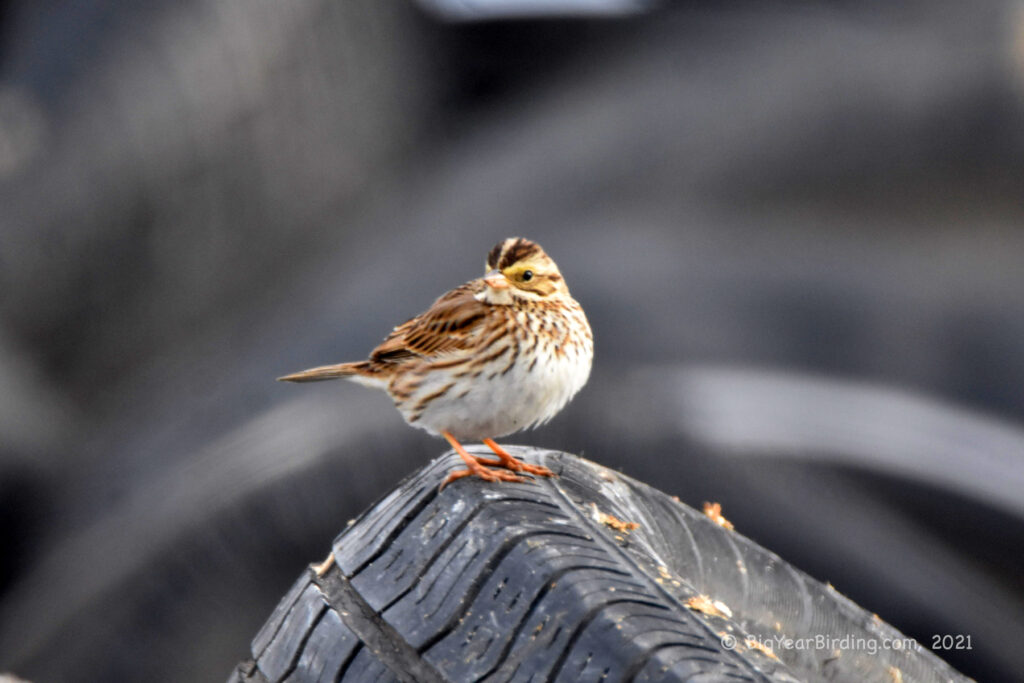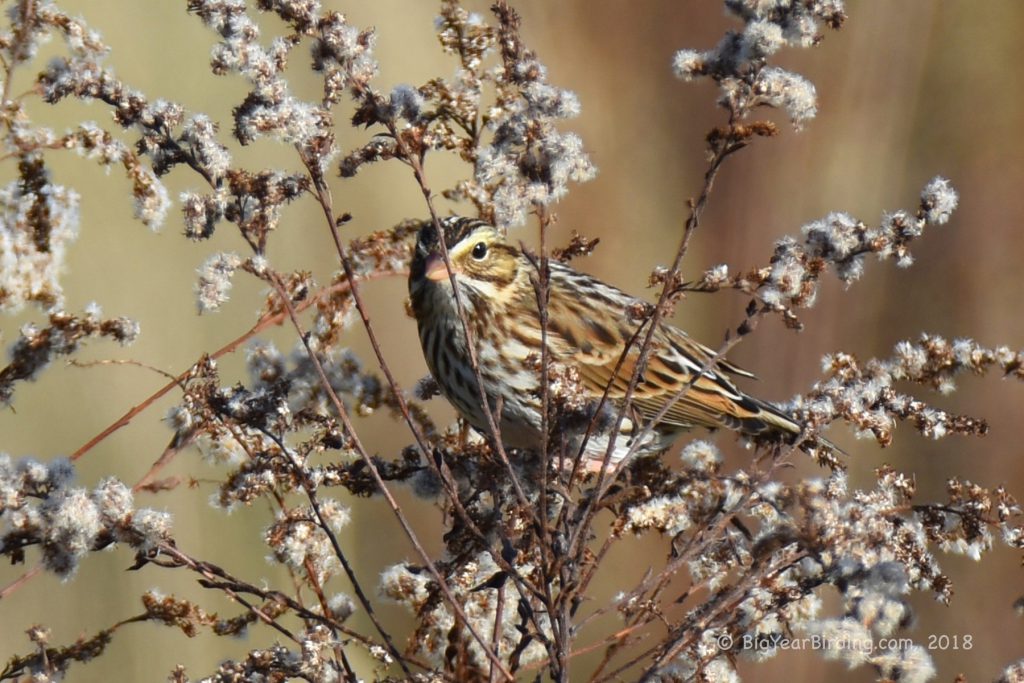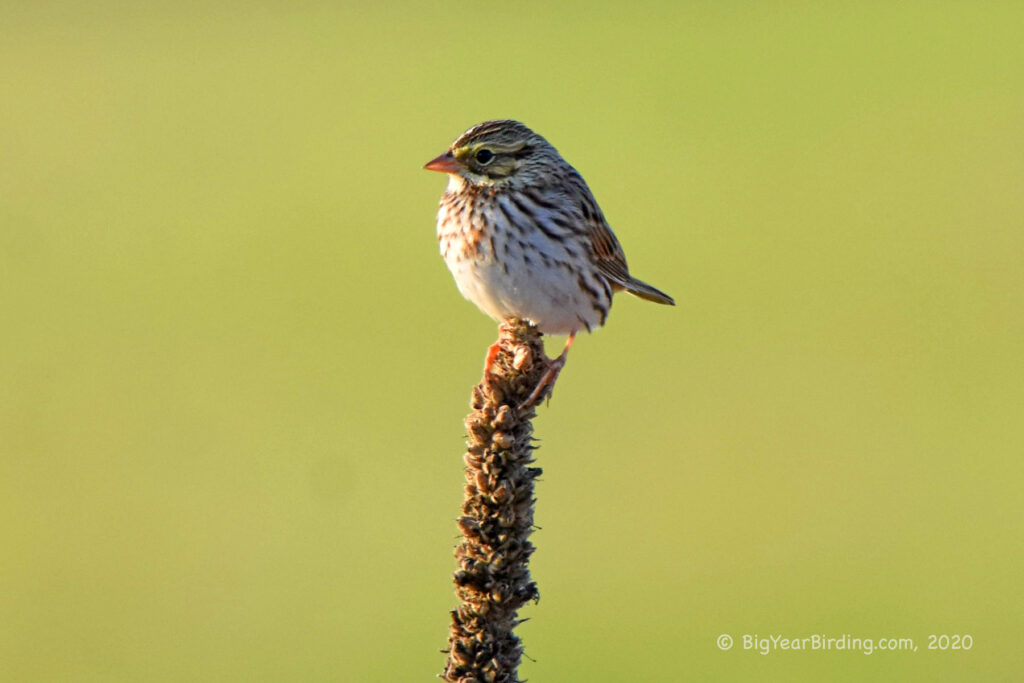
The Savannah Sparrow (Passerculus sandwichensis) is a small passerine bird found across North America. This sparrow is about 5.5 inches in length and has a wingspan of approximately 7.5 inches. It weighs around 0.6 to 0.8 ounces, with males generally being slightly heavier than females.

The Savannah Sparrow can be identified by its small size, brown and grayish plumage, and distinctive yellow patch above its eye. It has a slightly curved beak, which is characteristic of sparrows, and a streaked breast. The feathers on its back are brown with black streaks, and the feathers on its wings have white and brown edges. It has a short, notched tail.
Savannah Sparrows breed in open fields, grasslands, and marshes, and they are often seen perched on tall grasses or low bushes. During migration, they can be found in a variety of habitats, including beaches, agricultural fields, and meadows. In the winter, they migrate to the southern United States and Mexico, with some populations traveling as far south as Central America.
During the breeding season, Savannah Sparrows feed on insects and spiders, and they occasionally eat seeds and fruits. During migration and in the winter, they primarily eat seeds from grasses and weeds. They are often found foraging on the ground, and they will also pick seeds off of plants and grasses.

The Savannah Sparrow is a common bird throughout North America, and it is not currently considered to be threatened or endangered. However, habitat loss due to urbanization and agriculture has led to declines in some populations. Conservation efforts to protect grassland and marsh habitats can help ensure the survival of this iconic North American bird.

